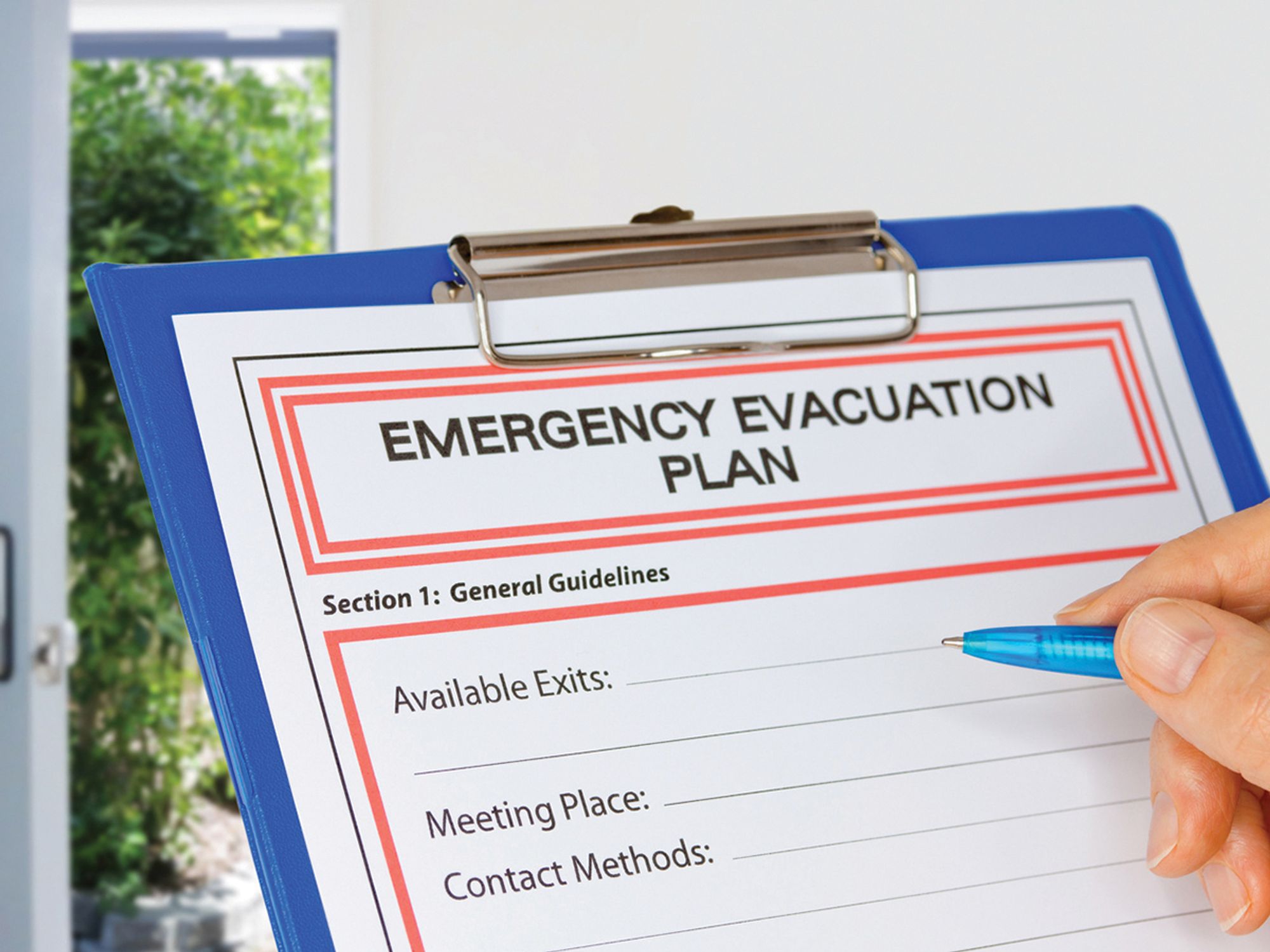InstituteEmergency Planning - OSHASafety & HealthEmergency PreparednessEmergency Planning (OSHA)General Industry SafetyEmergency ExitsExit RoutesIn Depth (Level 3)EnglishAnalysisFocus AreaUSA
Evacuation planning
['Emergency Planning - OSHA']

- An evacuation plan requires determining when evacuation is necessary and establishing procedures for a safe evacuation.
- A disorganized evacuation can result in confusion, injury, and property damage.
A common means of protecting workers is evacuation. In case of fire, an immediate evacuation to a predetermined area away from danger may be necessary. In a hurricane, evacuation could involve the entire community and take place over a period of days.
When developing an emergency action plan, employers should:
- Determine the conditions under which an evacuation would be necessary.
- Establish a clear chain of command. Identify employees with the authority to order an evacuation. Designate “evacuation wardens” to assist others in an evacuation and to account for personnel.
- Establish specific evacuation procedures. Establish a system for accounting for employees. Consider employees’ transportation needs for community-wide evacuations.
- Establish procedures for assisting persons with disabilities and those who do not speak English.
- Post the company’s evacuation procedures.
- Designate employees to continue or shut down critical operations while an evacuation is underway. They must be capable of recognizing when to abandon the operation and evacuate themselves.
- Coordinate plans with the local emergency management office.
A disorganized evacuation can result in confusion, injury, and property damage. An evacuation floor plan should designate at least one primary and secondary evacuation route and exit. These must be:
- Located as far away as practical from each other.
- Clearly marked and well lit.
- Equipped with emergency lighting in case a power outage occurs.
- Wide enough to accommodate the number of evacuating employees.
- Clear and unobstructed at all times.
- Unlikely to expose evacuating employees to additional hazards.
Obtaining an accurate count of employees after evacuation requires planning and practice. To ensure the fastest, most accurate accountability, employers should consider including these steps in an emergency action plan:
- Designating assembly areas where employees should gather after evacuating.
- Taking a head count after the evacuation. The names and last known locations of employees not accounted for should be determined. Confusion in the assembly areas can lead to unnecessary and dangerous search and rescue operations.
- Establishing a method for accounting for non-employees such as suppliers and customers.
- Establishing procedures for further evacuation in case the incident expands. This may consist of sending employees home by normal means or providing them with transportation to an off-site location.
